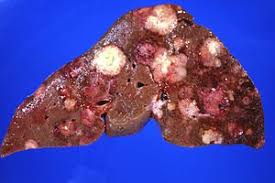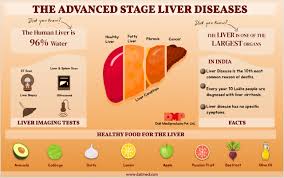The liver is an organ about the size of a football. It sits just under your rib cage on the right side of your abdomen. The liver is essential for digesting food and ridding your body of toxic substances.
In America, liver disease affects millions and is on the rise. Did you know there are more than 100 different types of liver disease? Living with long-term, chronic liver disease can cause damage to your liver.
Common Causes of Liver Disease
- Viruses
- Genetics
- Autoimmune disease
- Excessive use of alcohol
- Poor diet and/or obesity
- Reactions to medications, street drugs, or toxic chemicals
Most liver diseases damage your liver in similar ways and for many, the progression of liver disease looks the same regardless of the underlying disease.
Early Diagnosis of Liver Disease is Very Important
Early diagnosis may prevent damage from occurring in your liver. Your liver is an incredible organ. If you’re diagnosed when some scar tissue has already formed, your liver can repair and even regenerate itself. Because of this, damage from liver disease can often be reversed with a well-managed treatment plan.
Many people with liver disease do not look or feel sick even though damage is happening to their liver. At a certain point in the progression of liver disease damage can become irreversible and lead to liver failure, liver cancer, or death.
Did you know that hepatitis simply means inflammation of the liver?
Inflammation is the body’s natural response to injury and an important part of healing or immune response. Think about when you get a cut or injury to your skin. The area around the wound becomes swollen or inflamed. Seeing the swelling is not the only way you experience the inflammatory phase. You may also experience pain, redness, or the wound may feel warm to the touch. Under the skin, your body is hard at work to stop the bleeding and prevent infection. Blood vessels near the wound widen, or dilate, making more room for special healing and repair cells, or cells in the wounded area. These cells remove damaged cells and harmful substances (like bacteria or viruses) and allow the rest of the healing process to continue. Inflammation is essential to fight infection.
When Inflammation Becomes Disease
While this controlled inflammation is essential to maintain proper function and balance in the liver, if it becomes dysregulated it drives the progression of liver disease. This diseased inflammation is called hepatitis. We most often hear the word hepatitis when we talk about viral hepatitis, like hepatitis A, B, or C, but viruses are not the only cause of hepatitis. Infection with a virus, overindulging in alcohol or fatty foods, or even our own immune system can trigger a continual inflammatory response in the liver, disrupting the closely regulated cycle of inflammation and healing. When someone has liver disease, their liver enters into a very dangerous cycle. Persistent inflammation sends nonstop signals to the repair cells to continue depositing collagen. The extra collagen stiffens around the tissue like it is supposed to in the healthy liver but, instead of a signal being released to stop the inflammation and discard the extra collagen, the inflammation continues and even more collagen is deposited leading to more stiffening. This is how scars or fibroids, develop in the liver. If left untreated, the scars will continue to replace healthy liver cells, leading to severe scarring known as cirrhosis.
It’s important to speak to your doctor about any possible risk factors for hepatitis or if you’ve experienced symptoms. There are many different causes for hepatitis with varying risks and symptoms.
Check out Tuesday on Hepatitis!

